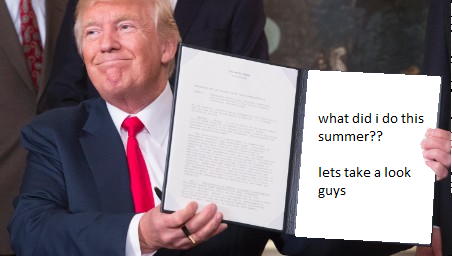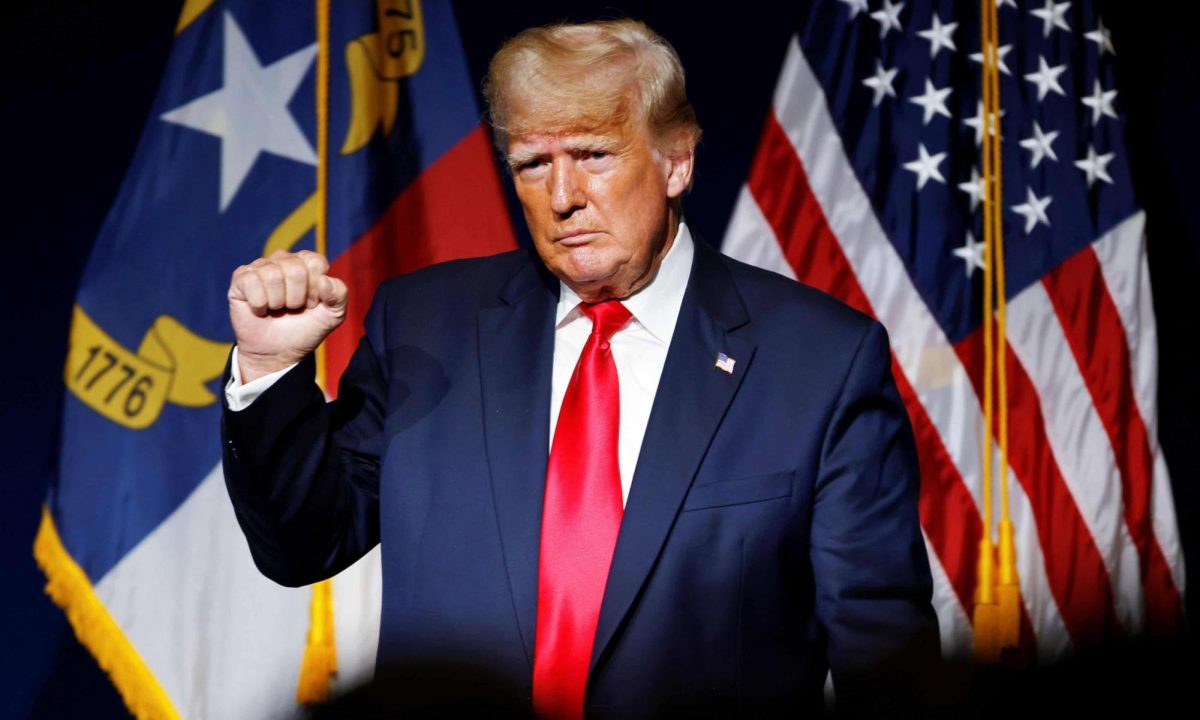Donald Trump Summer Extravaganza Recap

October 4, 2017
U.S. President Donald Trump had a lot on his plate this summer. Each of these items probably deserves its own article, but for now, here’s a list of the biggest Trump-related things this summer:
- Heathcare repeal failure. Efforts by Congressional Republicans to repeal or at least do something about Obamacare had been dragging on for months before collapsing in spectacular fashion. To pass legislation in the Senate, a total of 60 votes is required, rather than simply a 51 vote majority. To be more precise, 60 votes are required to override opposition filibusters. However, once every fiscal year, Congress passes what’s known as a budget reconciliation bill which originates in the Budget Committee and then requires only 51 votes in the Senate to go through (Republicans have 52). If the bill were to fail in committee, the committee could continue amending and redrafting the bill over and over until the committee let it reach the floor of the Senate. However, if the bill falls short of the 51 vote threshold in the Senate floor, the ability to pass a budget reconciliation bill is forfeited until next fiscal year.The Byzantine legislative process exploded into the spotlight when Arizona Republican Senator and longtime conservative voice John McCain voted for the bill in the committee, allowing the bill to reach the floor, and then cast the deciding vote against it on the floor itself. Republicans had expected two breakaway senators to already vote against the bill, reducing their numbers to 50 but still expecting success thanks to a tie-breaking vote from Vice President Mike Pence. McCain sabotaged this calculus by voting for the bill in committee and then against it on the floor. Had he voted it down in committee, the Republican-controlled committee could have continued submitting and amending the bill forever, but forcing it to die on the floor collapsed the effort entirely, as, once again, the process can only be done once every fiscal year. Donald Trump unleashed a tweetstorm at McCain, calling him a traitor in all sorts of terms, as well as at Mitch McConnell, the Republican Senate Leader, accusing him of weakness and inability to pass any legislation at all.
- Charlottesville riots and response. When the local government of Charlottesville moved to remove a Confederate statue of Robert E. Lee, groups in the region associated with support for the Confederacy, white supremacism, and other things outside the Overton window led a protest; it quickly interrupted into violence as “anti-fascist” demonstrators crashed the party. The clash led to the death of one such anti-fascist protester, who was hit by car (driven by a man with white supremacist connections) through a crowd.The already national controversy was magnified by President Trump’s response to the aforementioned events. News sources singled out what seemed, on Trump’s part, to be an equivocation of white supremacists with anti-fascist protesters.Trump’s initial response was lambasted for criticising violence “on both sides”, which many in the press and in politics (including Trump’s fellow Republicans) viewed as an equivocation of white supremacists with anti-fascists. Trump was persuaded, amid the media fallout, to read a prepared statement from the Diplomatic Room of the White House explicitly condemning neo-Nazis and naming specific groups to condemn. However, Trump went off of the prescribed track once more the day after, reiterating his claims that there was blame on both sides, that not all those protesting the removal of Confederate statues were white supremacists, and re-articulating a defense of those statues as part of the national history. Trump continued to criticise the media for not being satisfied, in his opinion, with his prior condemnation of neo-Nazis. The feud embroiled the nation for days as many debated what ought to be done about statues that might invoke a past that few are proud of and many argued over whether Trump was in the right.
- Budget deal with Democrats. President Trump also involved himself in Congressional negotiations regarding the passage of a federal budget bill, and controversially sided with the Democratic proposal. The primary issue at hand was raising the debt ceiling and avoiding a default on the national debt, a potentially devastating act that never actually happens but looms large when partisan gridlock postpones the passage of a budget. The majority of the controversy regards whether the new budget for the next fiscal year would include funding not only for stricter immigration enforcement, but for a border wall with Mexico as Trump promised on the campaign trail. Trump, in a move that reeked of capitulation to his base, conceded early in the negotiation process that he would not seek wall money in this bill.Conservatives are hounded by this issue year after year, as a large contingent of conservatives that make up the Republican Party are against increasing the debt ceiling without cuts to spending, but actually cutting spending is a task that is quietly acknowledged as impossible by both parties; as a result, Republicans constantly seek to sweep this issue under the rug to avoid reprisal by their base. To that end, Democrats proposed a solution that would resolve the debt crisis, but for only six months, setting the stage for the issue to flare up once more later in the year. This means that the issue will reemerge to bother Republicans even closer to what is sure to be a heated midterm contest, especially in the House of Representatives. Republicans were aghast that Trump agreed to the Democratic proposal, and viewed this anywhere in between a necessary concession to a betrayal.





